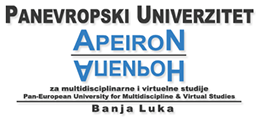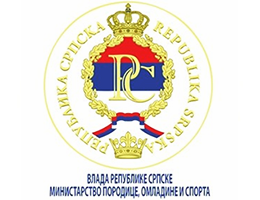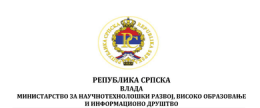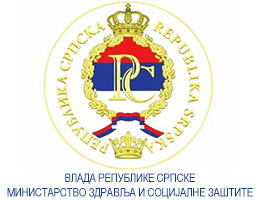Functional Ability of Cardiovascular System in Adolescents
Volume 5, Issue 2 (2015)
Volume 5, Issue 2 (2015)
Functional Ability of Cardiovascular System in Adolescents
Abstract:
Testing function of cardiovascular system is measured, the most often, physical ability and functional capacity of transport system or its parts. Many studies have found an association with obesity by reducing functional capacity of cardiovascular system that is correlated with physical ability to work. This research was conducted in order to determine the functional ability of cardiovascular system in adolescents to assess need of their sports activities at this age. The sample consisted of 55 high school students, male, 16 years old (+/- 6 months). For this research, the body mass index is used as a criterion for forming groups of respondents. The functional capacity of cardiovascular system is observed through variables: systolic and diastolic blood pressure before and after load and heart rate before and after load after performing Astrand test of ergometar bicycle. Analysis of functional abilities cardiovascular respondents before and after load, it was noted that in respondents who had a higher body mass index, showed higher values of systolic and diastolic blood pressure before and after load, as well as higher values of heart rate before and after load. This study confirmed previous numerous studies, stating that increased body mass index leads to harmful effects on cardiovascular system.
Keywords:
cardiovascular system, physical activity.
Full Text:
References:
- Hainer, V., Toplak, H., & Mitrakou, A. (2008). Treatment Modalities of Obesity What fits whom? Diabetes care, 31(Supplement 2), S269-S277.
- Hunter, G. R., Bamman, M. M., & Hester, D. (2000). Obesity-Prone Children Can Benefit from High-Intensity Exercise. Strength & Conditioning Journal, 22(1), 51.
- Kodama, S., Saito, K., Tanaka, S., Maki, M., Yachi, Y., Asumi, M., & Sone, H. (2009). Cardiorespiratory fitness as a quantitative predictor of all-cause mortality and cardiovascular events in healthy men and women: a meta-analysis. Jama, 301(19), 2024-2035.
- Do Lee, C., Folsom, A. R., & Blair, S. N. (2003). Physical activity and stroke risk a meta-analysis. Stroke, 34(10), 2475-2481.
- Ljekarinfo (2014). Pothranjenost. Preuzeto 11.09.2014 godine sa sajta http://www.lekarinfo.com/metaboliki-poremecaji/pothranjenost. [In Serbian]
- Malacko, J. (1991). Osnove sportskog treninga [Fundamentals of sports training. In Serbian]. Novi Sad: FTN.
- Malacko, J. i Rađo, I. (2004). Tehnologija sporta i sportskog treninga. Sarajevo: Fakultet sporta i tjelesnog odgoja Sarajevo. [In Bosnian]
- Malina, R. M., & Katzmarzyk, P. T. (1999). Validity of the body mass index as an indicator of the risk and presence of overweight in adolescents. The American journal of clinical nutrition, 70(1), 131s-136s.
- Mitić, D. (2011). Značaj fizičke aktivnosti u prevenciji i terapiji gojaznosti u detinjstvu i adolescenciji. Medicinski glasnik Specijalna bolnica za bolesti štitaste žlezde i bolesti metabolizma Zlatibor, 16(39), 107-112. [In Serbian]
- Mišigoj-Duraković, M., Heimer, S., & Duraković, Z. (1996). Tjelesno vježbanje i gojaznost. U: Milanović D. ured. Fitness, FFK,Zagreb, 43-45. [In Croatian]
- Pucarin-Cvetković, J., Mustajbegović, J., Doko Jelinić, J., Senta, A., Alexandra Nola, I., Ivanković, D., ... & Milošević, M. (2006). Body mass index and nutrition as determinants of health and disease in population of Croatian Adriatic islands. Croatian medical journal, 47(4), 619-626.
- Sudarov, N., Miškov, A., Kamasi, F., Glamočić, G., Fratrić, F., & Grujić, N. (2007). Testovi za procenu fizičkih performansi. Novi Sad: Pokrajinski zavod za sport. [In Serbian]
- Šentija, D. (2009). Fiziologija sporta. Zagreb: Kineziološki fakultet Sveučilišta u Zagrebu. [In Croatian]
- Vranesić, D., & Alebić, I. (2006). Pretilost–epidemija modernoga doba. Preuzeto 11.09.2014 godine sa sajta http://www.plivazdravlje.hr/?section=home&cat=t&show=1&id=11808. [In Croatian]
- Wang, J., Miao, D., Babu, S., Yu, J., Barker, J., Klingensmith, G., Rewers, M., Eisenbarth, G. S. , & Yu, L. (2006). Autoantibody negative diabetes is not rare at all ages and increases with older age and obesity. J Clin Endocrin Metab. 10.1210/jc.
- Warner, J. (2005). Obese People More Prone to Injury. http://foxnews.webmd.com/content/article/109/109133.htm.
- Westcott, W. L. (2006). Childhood obesity. Strength Cond. J.
- Williams, M. A., Fleg, J. L., Ades, P. A., Chaitman, B. R., Miller, N. H., Mohiuddin, S. M., ... & Wenger, N. K. (2002). Secondary Prevention of Coronary Heart Disease in the Elderly (With Emphasis on Patients≥ 75 Years of Age) an American Heart Association Scientific Statement from the Council on Clinical Cardiology Subcommittee on Exercise, Cardiac Rehabilitation, and Prevention. Circulation, 105(14), 1735-1743.
- Završnik, J. (2004). Značenje tjelesne aktivnosti u prevenciji debljine. Pediatria Croatica 48(1). [In Croatian]
- Zdravković, D., Vlaški, J., Sajić, S., Živić, S., Katanić, D., Šaranac, L., & Samardžić, M. (2011). Nizak rast u detinjstvu i adolescenciji. Vodič za otkrivanje, dijagnostiku i lečenje dece i adolescenata niskog rasta. 2nd ed. Beograd: Udruženje pedijatara Srbije. [In Serbian]






